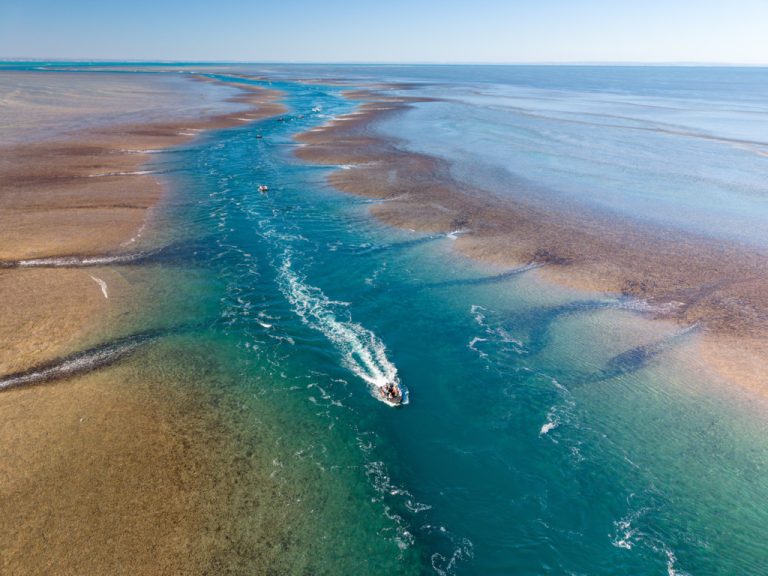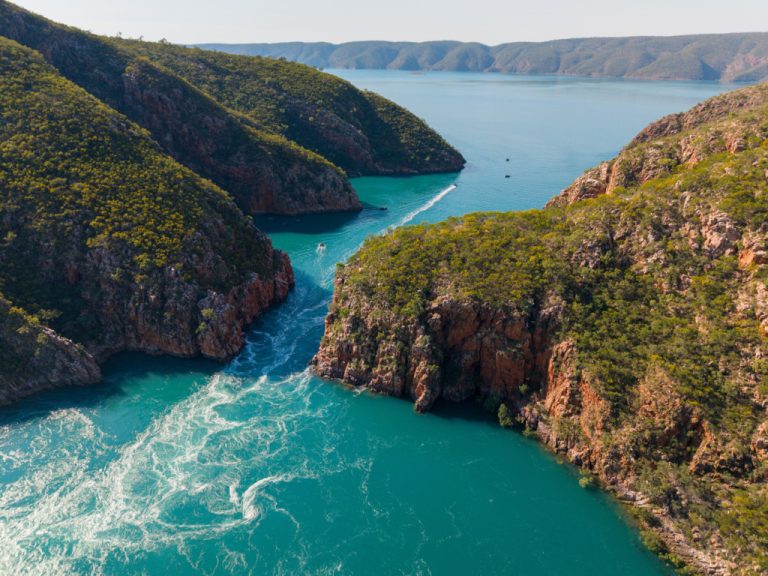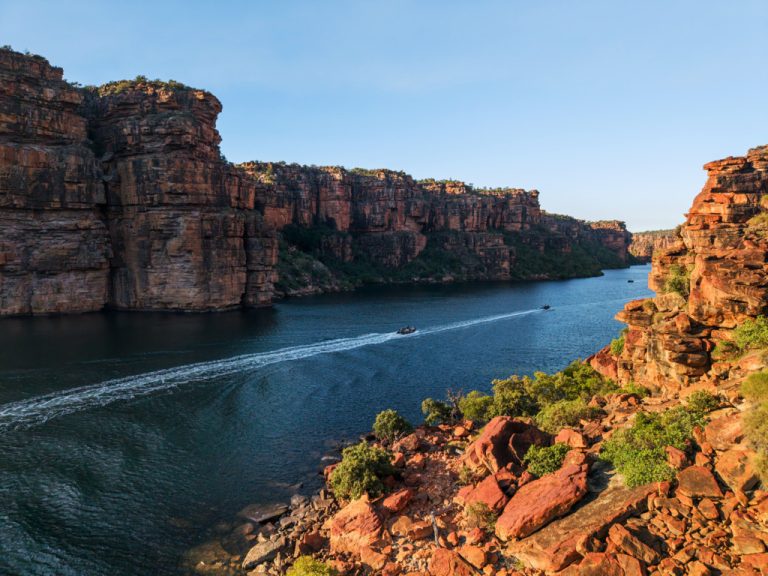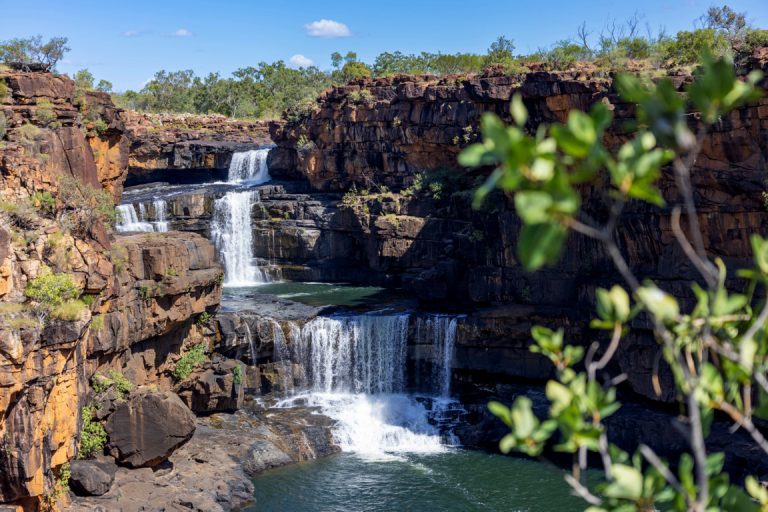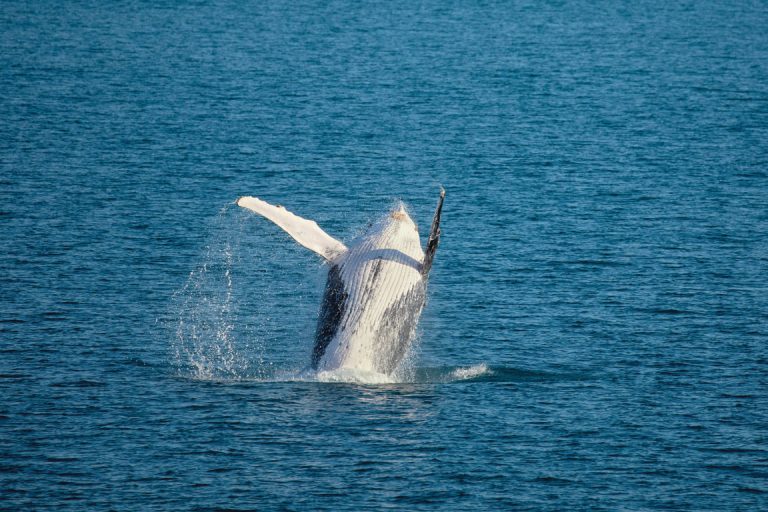Kimberley: Between Tides and Legendary Waterfalls
The Kimberley region, located in the far northwest of Australia, is one of the most remote, inaccessible, and geologically ancient destinations on the planet.
Covering over 400,000 square kilometers and with an extremely low population density, this vast territory preserves an unspoiled natural environment, made even more extraordinary by its rugged topography, the power of its tides, and a labyrinthine coastline dotted with islands, fjords, and rivers that wind inland. In this context, expedition cruising is not only the most practical way to access the Kimberley—it is the only way to fully experience its unique features.
SSC_ZO_Kimberley_Montgomery_Reef_395
Tides are a fundamental element of the Kimberley experience. With variations that can exceed twelve meters, they are among the most extreme in the Southern Hemisphere and shape the coastal landscape daily, creating hydraulic and geological phenomena observable only at specific times of the day. One of the most representative examples is Montgomery Reef, a coral platform stretching about 400 square kilometers that gradually emerges from the water as the tide recedes. During this phase, residual water flows through an intricate network of natural channels, generating a dynamic system of streams and marine waterfalls. This relentless movement of water, which seems to turn the ocean upside down, reveals a literally “living” reef where marine turtles, rays, barrier sharks, and numerous seabird species can be observed.
Another exceptional phenomenon is the Horizontal Falls, located within Talbot Bay. Despite their name, these are not true waterfalls but horizontal rapids caused by tidal flows passing through two rock gaps about 300 meters apart. Water is forced powerfully through these gorges, creating rapids that can reach speeds exceeding 20 knots, with a visible water level difference between the two sides of the gorge that can exceed four meters.
Another must-see stop is the King George Falls, among the tallest twin waterfalls in Australia. Located along the King George River, these falls plunge from a rock face over 80 meters high, creating an impressive spectacle, especially during the wet season when the water flow peaks. Even in the dry season, the vertical red rock walls, shaped by erosion over millions of years, provide a striking backdrop.
SSC_ZO_Kimberley_Talbot_Bay_Horizontal_Falls_Area_248
SSC_ZO_Kimberley_King_George_River_60
Beyond these three main sites, the Kimberley offers numerous other points of naturalistic, geological, and cultural interest. The Prince Regent River, for example, is a river that follows a surprisingly straight course—a rarity from a geomorphological perspective. Navigating it leads to King Cascade, a series of waterfalls descending over a wall covered with tropical vegetation. Cruises often include river upriver journeys and explorations of smaller branches by Zodiac boats, offering close encounters with local fauna and flora.
Another iconic site is the Mitchell Falls, located inland. Although not directly accessible by sea, many cruises include helicopter excursions that allow visitors to reach and observe them from above or land for a short hike. The Mitchell Falls area is rich in Aboriginal rock art, particularly the Gwion Gwion paintings, which depict stylized human figures and are among Australia’s oldest artistic testimonies.
Rock art is another distinctive feature of the Kimberley. In areas such as Swift Bay, Vansittart Bay, and Bigge Island, visitors can admire Wandjina and Gwion Gwion paintings dating back tens of thousands of years, perfectly preserved on rock walls. Often accessible only via short coastal walks, these works are fundamental to understanding the cosmology and spiritual traditions of the local Aboriginal peoples, many of whom remain actively involved in managing the sites and passing on their knowledge.
SSC_Kimberley_Hunter_River_Region_(Mitchell_Falls_Excursion)_
SSC_Kimberley_Wildlife
From a wildlife perspective, the Kimberley is also a strategic point for observing humpback whales. Camden Sound Marine Park, a vast marine protected area established in 2012, is one of the primary breeding grounds for these cetaceans. From June to September, thousands of whales migrate from the Antarctic region to give birth and nurture their calves in the warmer waters of the Kimberley.
Finally, the Buccaneer Archipelago, a complex of around 800 rocky islands, represents one of the most scenic landscapes in the entire region. Characterized by turquoise waters, strong currents, and uninhabited islands, this archipelago is a true paradise for geologists, wildlife photographers, and sea lovers. Kayak excursions, tender explorations, and anchoring in sheltered bays allow visitors to experience the environment directly and authentically.
In conclusion, the Kimberley stands as one of the richest and most fascinating expedition itineraries worldwide, where each day offers encounters with unique natural phenomena, ancient cultural traces, and landscapes of extraordinary beauty. It is not a destination to be visited by chance but a conscious choice for those seeking to immerse themselves in authentic nature, experience a real open-air geological lesson, and undertake an adventure combining exploration, knowledge, and deep respect for the environment.
Stay tuned for news, updates, and reviews on the world of cruising at Cruising Journal, with photos, videos, and cruise offers.

